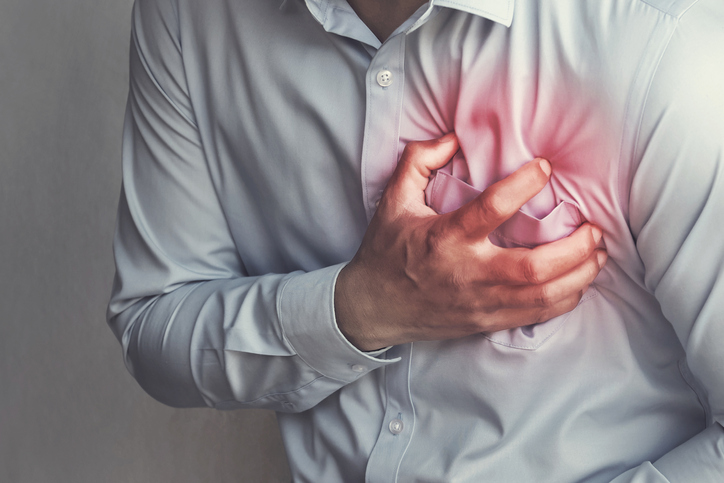Pain
What Is Chest Pain?

Chest pain is experienced in the upper body, from the neck down to the upper abdomen. It can last for a few minutes, hours, days, or possibly months. It can be sharp, dull, squeezing, aching, tightening, burning, crushing, etc. There are various causes of chest pain; however, the most life-threatening cause involves the heart or lungs.
Chest pain should never be ignored. Seek emergency medical assistance if chest pain is present.
Causes of chest pain
There are various causes of chest pain. They include, but are not limited to, the following:
- Heart problems, such as a heart attack, blood clot, angina, aortic dissection, pericarditis (inflammation of the sac around the heart), myocarditis, aortic aneurysm, mitral valve prolapse, coronary artery disease, cardiomyopathy, etc.
- Lung conditions, including pulmonary embolism, pleurisy, collapsed lung (pneumothorax), pulmonary hypertension (high blood pressure in the lungs), pneumonia, bronchospasm, viral bronchitis, etc.
- Digestive system disorders, such as heartburn, acid reflux, GERD, gallstones, inflammation of the gallbladder or pancreas, ulcers, esophagitis, swallowing difficulties, etc.
- Muscles and bones in the chest wall, which can include sore muscles, costochondritis, injured or broken ribs, compression fracture, etc.
- Panic attack or anxiety
- Shingles
- Fibromyalgia
Symptoms
Chest pain can occur with a wide range of symptoms. They include, but are not limited to, the following:
- Sharp or stabbing pain
- Dull or achy feeling
- Pressure, fullness or tightness
- Shortness of breath
- Cold sweats
- Dizziness or weakness
- Nausea or vomiting
- Pain lasting more than a few minutes
- Pain increasing with activity
- Pain that goes away and returns or varies in intensity
- Crushing or shooting pain in the back, neck, jaw, and especially the left shoulder and arm(s)
Non-cardiac chest pain
Non-cardiac chest pain is marked by different symptoms, including sour taste in the mouth, difficulty swallowing, pain that intensifies upon position change, tender points upon pushing on the chest, and increase in pain during deep breathing or coughing. Heartburn can cause pain in the stomach, as well as, causing a painful, burning feeling behind the breastbone.
Diagnosing chest pain
A health care professional will rule out life-threatening conditions, such as heart attack, collapsed lung, or a blood clot in the lungs. The initial tests performed may include the following:
- Electrocardiogram (ECG or EKG)
- Blood tests
- X-rays of the chest
- Computerized tomography (CT scan)
- MRI
- Echocardiogram
- Stress tests
- Angiogram





